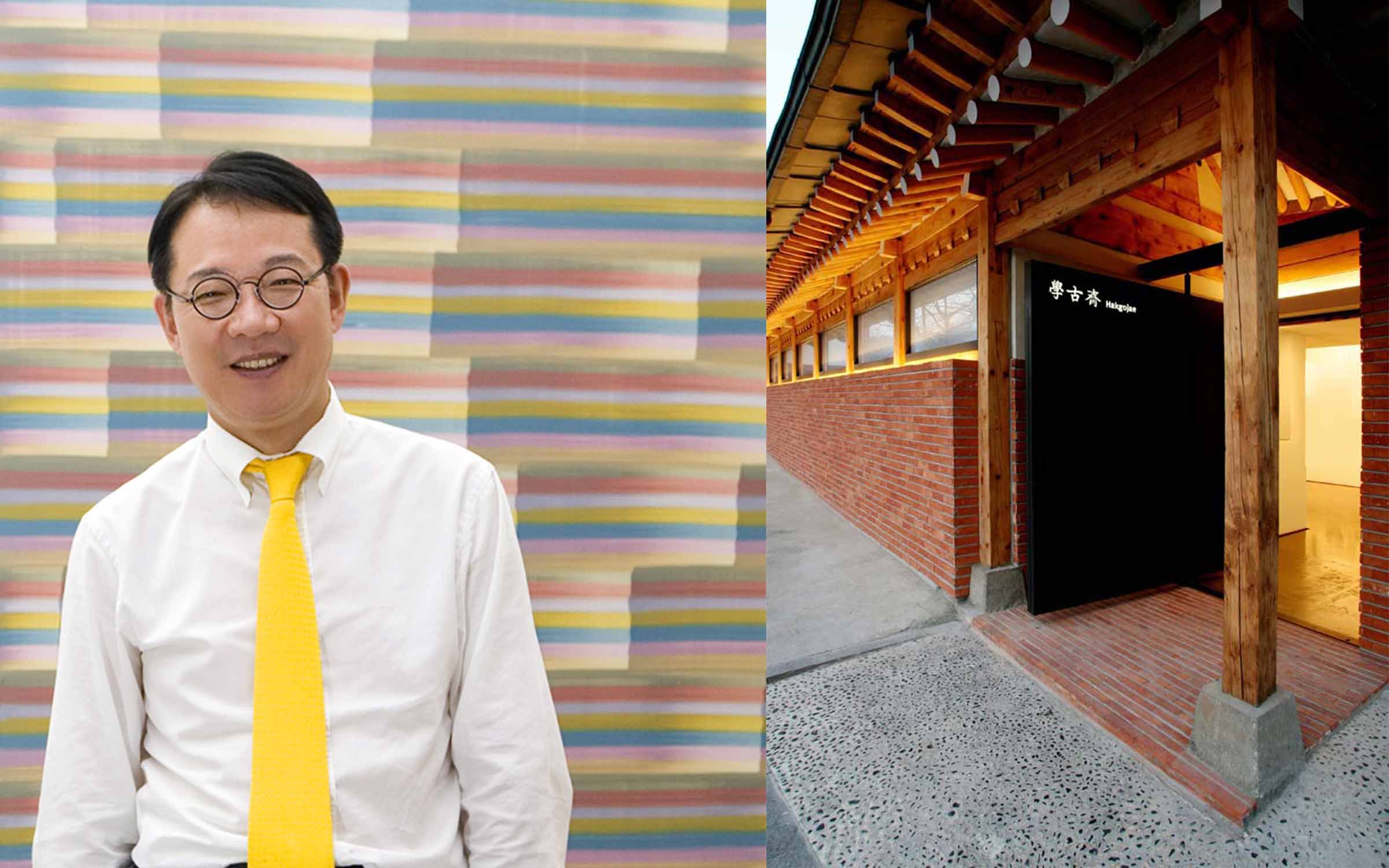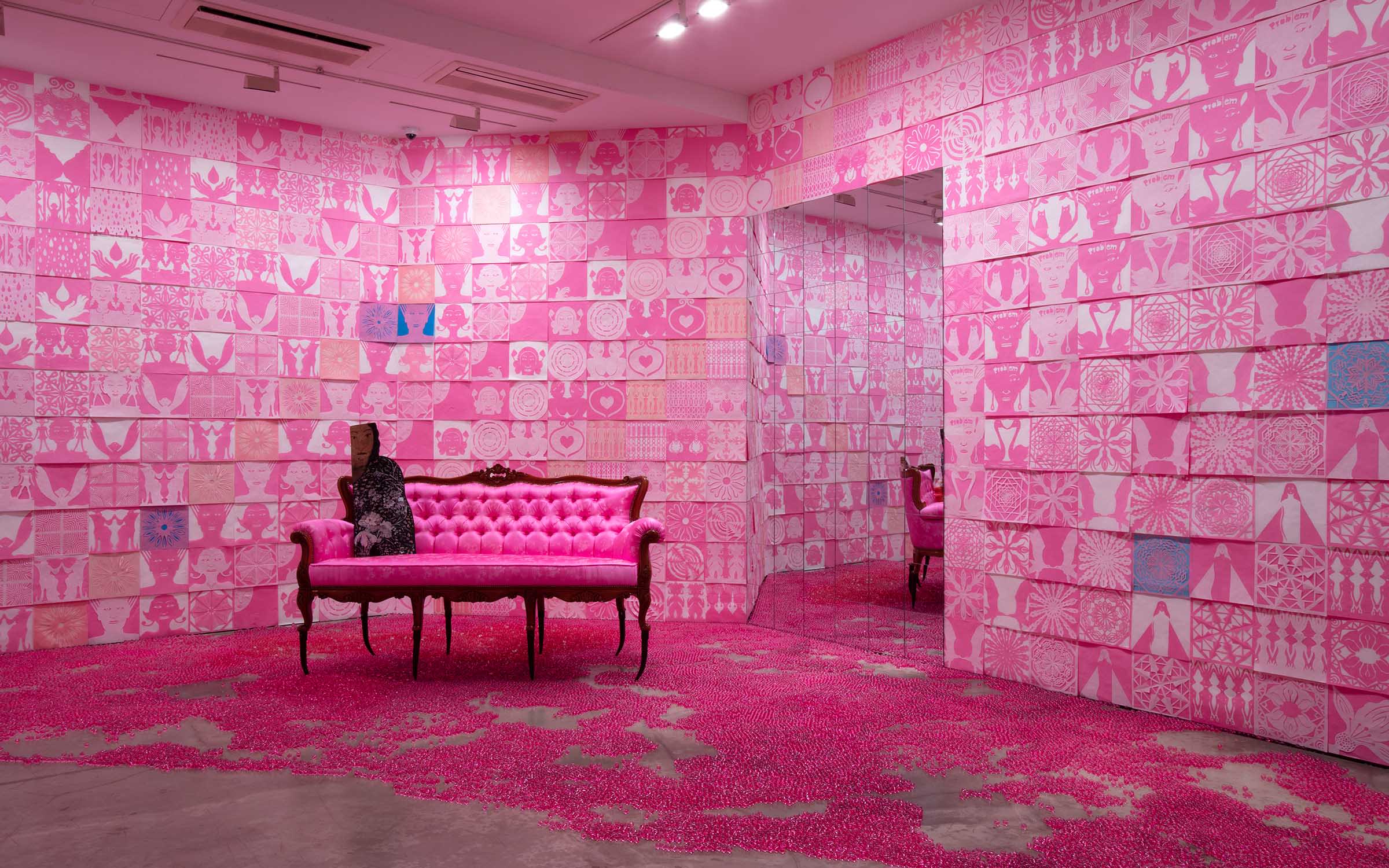How a Confucius-inspired gallery became one of Seoul’s leading lights
At Hakgojae Gallery, Lee Ufan, Nam June Paik, and Roman Opalka make up a program bridging East and West
Log in and subscribe to receive Art Basel Stories directly in your inbox.
Clément Dirié: Could we first talk about the name of your gallery?
Chankyu Woo: Hakgojae means ‘the house of studying the old and recreating the new.’ It derives from two verses from the Analects of Confucius – wen-gu-erzhi-xin, or to know the new by reviewing the past, and hak-go-chang-sin, to define the future by learning from the past. Rather than attending a school where Western knowledge was taught, I followed traditional Oriental studies in a private academy. This learning experience has formed the basis of my journey as a gallerist. But even though I learned the old and traditional, I’m constantly looking to discover the new and the wider world. The gallery’s name echoes this double movement – we cherish our mission to recreate new ways of seeing and living while pursuing our duty to study traditions. Bearing this in mind, we have done our best to become a bridge between the old and the new, art and life, and this also includes participating in creating a new path that may be able to heal the tragic history of colonization and the modern division of the Korean peninsula.

CD: How would you define the identity of the gallery and its program?
CW: Having studied Oriental classics and paintings and having introduced both national contemporary art and new trends from the global artworld to South Korea for three decades, I would say that our identity is defined by an open-minded attitude and a wish to carry out various activities – from exhibitions to publishing – that connect and transcend traditional and contemporary art, Oriental and Western art, art and life, time and space. We especially emphasize the convergence of the wisdom of the old and the avant-garde spirit of the new.
Our commitment to Minjung art [People’s art] – a sociopolitical movement that emerged in the 1980s – also defines our identity. While other galleries and museums were reluctant to exhibit it because of the regime’s repression, Hakgojae was the first commercial gallery to introduce the work of the major Minjung artists, including Min Joung-Ki and Shin Hak-Chul. We showed some his work at Art Basel Hong Kong in the past, including his 1991 painting, The June Democratic Uprising and the Laborers’ Demonstration of July and August, which depicts important scenes of the fall of the military dictatorship through the fortitude of the people calling for democratization. More recent works such as Your Portrait – Stop Playing Games [2018] contains the stern warning of a possible nuclear war between South and North Korea, the only divided nation of the globe today.

CD: You recently celebrated your 30th anniversary. Looking back, how do you feel about what you have been able to achieve?
CW: When we first opened in 1988, we started as a very small gallery, measuring about 30 square meters. Today, we are composed of two buildings with a total of five exhibition spaces, and are located next to the National Museum of Modern and Contemporary Art. In 2018, we opened a new space called Hakgojae Cheongdam, in the Gangnam area, for younger and international artists. The inaugural exhibition was of Fiona Rae’s work. It was exciting to introduce a British artist whose works we had never exhibited before. We’re looking forward to seeing where this new path will take us. Besides our physical expansion – we also had a branch in Shanghai from 2013 to 2017 – the most fulfilling thing is to see the gallery’s role constantly growing. I am also very proud of our publishing company, whose mission is to deepen our knowledge of contemporary art, as when we published the complete writings of Choi Soon-Woo, the former director of the National Museum of Korea.
Either mapping is wrong or this module has no Frontend component yet.
CD: Could you tell me about your background? What was the scene like in Seoul when you opened the gallery?
CW: The South Korean art market has been steadily growing since the mid-1980s. Together with the country’s economic growth, the art market has advanced and the scale of the deals has expanded as well. The 1980s were a time when people were exhilarated by new things, so galleries and museums usually exhibited Western art. Because of my background in Oriental studies, my gallery first specialized in exhibiting traditional Oriental art. During this period, Hakgojae Gallery distinguished itself from the others by preserving values that we must never forget or lose, no matter how much the world changes.
CD: You mainly exhibit South Korean artists – Nam June Paik, Lee Ufan, Minjung masters, younger artists – but also foreign ones such as Giuseppe Penone, Roman Opalka, and Tim Eitel. How do the non-Korean artists fit into your aesthetics?
CW: Hakgojae Gallery is like an interchange station where past and future intersect, East and West communicate. Therefore, I believe it is important to introduce the innovative works of international masters to South Korea. I would say that the foreign artists we represent all incorporate an in-depth philosophical comprehension within their works. They relate closest to the significance of our lives, so they express a contemplative feeling about the inner human mind. This also relates to the call for human rights embodied in Minjung art.
This interview was first published in Art Basel | Year 49. Find out more here

